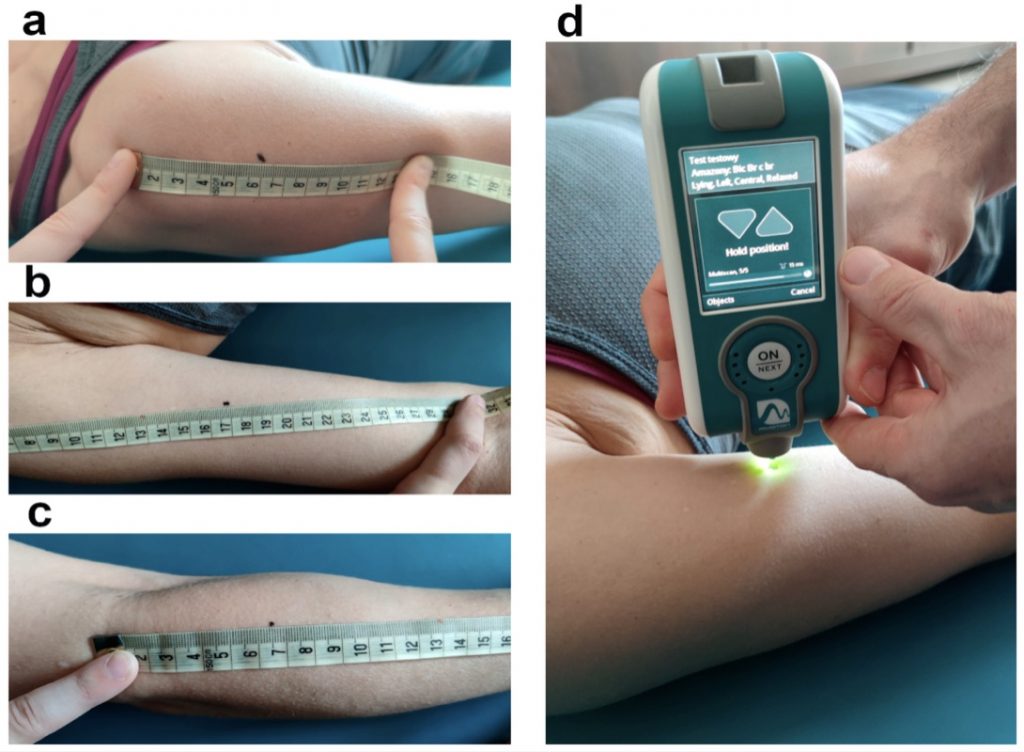Publications

Relationship between Viscoelastic Properties of Tissues and Bioimpedance Spectroscopy in Breast-Cancer-Related Lymphedema
Authors: Alicja Naczk 1, Janusz Dos 1, 2, Magdalena Gorska-Dos 1, Robert Sibilski 3, Piotr Gramza 4, Ewa Gajewska 5, Mariusz Naczk 6
Affiliations:
- Faculty of Physical Culture in Gorzow Wielkopolski, University School of Physical Education in Poznan, Estkowskiego Street 13, 66-400 Gorzow Wielkopolski, Poland
- Department of Oncological Physiotherapy, Greater Poland Cancer Centre, Garbary Street 15, 61-866 Poznan, Poland
- Institute of Medical Sciences, Collegium Medicum, University of Zielona Gora, Licealna Street 9, 65-417 Zielona Gora, Poland
- Association of Lubusz Innovation Network, Teatralna Street 49, 66-400 Gorzow Wielkopolski, Poland
- Department of Developmental Neurology, Poznan University of Medical Sciences, 49 Przybyszewskiego Street, 60-355 Poznan, Poland
- Institute of Health Sciences, Collegium Medicum, University of Zielona Gora, Licealna Street 9, 65-417 Zielona Gora, Poland
Journal: Journal of Clinical Medicine - February 2022, Volume 11, Issue 5, Article no. 1294 (DOI: 10.3390/jcm11051294)
-
Field & Applications:
- Medical
- Oncology
- Women's health
- Validity
- We believe that myotonometry can be used in the detection of lymphedema.
- Moreover, it seems that myotonometry can be used to test the treatment efficacy of BCRL.
The aim of this study was to assess the relationship between the viscoelastic properties of tissues and breast-cancer-related lymphedema (BCRL).
After a mastectomy, 46 females were allocated into a lymphedema group (L; n = 15, lymphedema occurred) and a control group (C; n = 31, lack of lymphedema). Bioimpedance spectroscopy was used to test BCRL. The mechanical properties of the tissues in both upper limbs were tested using myotonometry.
In group L, tone, stiffness, relaxation time, and creep measured on the biceps brachii of the impaired limb significantly differed from the results on the unimpaired limb. In group C, the differences were not significant. Moreover, both tone and stiffness were inversely correlated with the level of lymphedema (r = −0.72 and r = −0.88, respectively), and both relaxation and creep were significantly related to the level of lymphedema (r = 0.71 and r = 0.59, respectively), when myotonometry was completed on the biceps brachii of the impaired limb in group L. The relationships were not significant in group C.
Measurements of viscoelastic properties can provide useful information concerning lymphedema. Our findings suggest that significant correlations between selected mechanical properties of the tissues and BCRL can be used in BCRL detection and treatment.

Figure 1. The location of testing points for tested muscles: (a) deltoid; (b) biceps brachii; (c) brachioradialis; (d) measurement of the viscoelastic properties of tissues using Myoton.
Keywords: BCRL, myotonometry, mastectomy, breast cancer, lymphedema
The results of our study showed significant correlations between the mechanical properties of biceps brachii tissues measured in the impaired limb and the L-Dex in women with BCRL. These correlations may suggest that myotonometry can be used in BCRL detection. Measurements of the viscoelastic properties of the central part of the biceps brachii of impaired and unimpaired limbs can provide useful information concerning lymphedema. Moreover, it is possible that myotonometry can be useful for the evaluation of lymphedema development and treatment efficacy of BCRL; however, future studies are needed.


